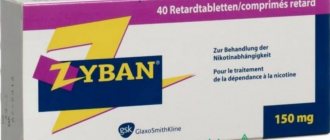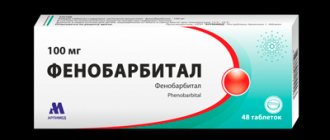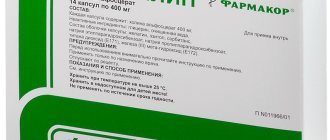Fevarin: depression and pain
The relationship between depression and pain is well known. Patients suffering from depression are significantly more likely to develop any type of pain syndrome compared to patients without depression. On the other hand, persistent pain that results in the patient's functional and social limitations often contributes to the development of depression.
Depression and pain feed each other, forming a vicious cycle. There is growing evidence that chronic pain syndromes and depressive disorders share a common neurochemical substrate (monoaminergic, mainly serotonergic and noradrenergic insufficiency). This may explain the effectiveness of medications developed to treat depression (antidepressants) on both mood and pain symptoms. A number of studies have shown that the administration of antidepressants to patients with depression and associated pain syndromes led to a decrease in depression and pain (2, 5, 11). However, the analgesic effect of antidepressants can be realized not only through the reduction of depression, but also through the own antinociceptive mechanism of antidepressants, which is not associated with depression. Studies show that prescribing antidepressants to nondepressed patients also reduces pain (12, 15).
The effectiveness of various antidepressants in treating pain varies widely. This is due to the pathophysiological heterogeneity of pain syndromes, with differences in the mechanisms of action of different antidepressants, even among drugs of the same group. In this regard, when prescribing certain antidepressants for the treatment of pain, one should rely on available research. For the first time, effectiveness in the treatment of pain syndromes, both associated and not associated with depressive disorders, was demonstrated with the use of amitriptyline, a drug from the group of tricyclic antidepressants. Unfortunately, the use of amitriptyline for pain syndromes is limited due to numerous side effects such as sedation, cognitive impairment, orthostatic hypotension, cardiac arrhythmias, dry mouth, constipation, which is associated with the affinity of tricyclic antidepressants for muscarinics, cholinergics, histamines and α1 -adrenoreceptors.
In the 80s and 90s of the last century, new classes of antidepressants were introduced into clinical practice - selective serotonin reuptake inhibitors (SSRIs) and selective serotonin and norepinephrine reuptake inhibitors (SNRIs). Due to their more favorable safety profile, these drugs have replaced older antidepressants in many situations. Selective serotonin reuptake inhibitors (SSRIs) and selective serotonin reuptake inhibitors (SNRIs) have been shown to have analgesic effects in a variety of pain syndromes. However, a number of studies have shown that SNRIs were more effective than SSRIs; in other studies, drugs from both groups showed equal effectiveness (3, 5, 7, 8).
This review presents studies that examined the effectiveness of fluvoxamine in various pain syndromes.
Mechanism of action of Fluvoxamine
Antidepressants can differ in their analgesic activity, even among drugs of the same class. Among drugs from the SSRI group, fluvoxamine has the greatest analgesic activity. A study by Schreiber (2005), which compared the analgesic activity of various SSRI antidepressants (fluvoxamine, fluoxetine, citalopram, escitalopram) in mice, showed a clear antinociceptive effect of fluvoxamine, while fluoxetine and citalopram showed a significantly weaker analgesic effect . Escitalopram in standard doses turned out to be completely ineffective, and with a significant increase in dose (at which 20% of mice died) it showed a weak analgesic effect. These data may indicate that the effect of fluvoxamine in clinical use is realized through the analgesic effect itself (possibly through the activation of descending antinociceptive systems), as well as through the reduction of depression. While the effectiveness of fluoxetine and citalopram in pain syndromes is most likely realized only through its influence on the affective component of pain. Thus, the analgesic clinical effect of fluvoxamine is more pronounced than the effectiveness of other drugs from the SSRI group. In this regard, among the SSRI drugs for the treatment of pain syndromes, fluvoxamine is the most preferable choice.
Another study by Schreiber (2006) showed that the analgesic effect of fluvoxamine was not reversed by naloxone. Thus, the mechanism of action of fluvoxamine is realized through non-opiate mechanisms. However, this study showed that fluvoxamine potentiates the action of opioid analgesics, acting mainly on kappa
-opioid receptors.
Another PET study showed that fluvoxamine administration reduced activation of brain regions involved in affective and integrative pain assessment (anterior cingulate sulcus and contralateral secondary somatosensory cortex) (10). This indicates that the effect of fluvoxamine may be due in part to a reduction in pain perception.
Fluvoxamine in the treatment of headaches
There are several studies that have demonstrated the effectiveness of fluvoxamine in the treatment of chronic headaches (chronic migraine, chronic tension-type headache, abuse headache) (2, 4, 5, 9). Frequent headache attacks often lead to excessive use of analgesics. As a result, in patients who abuse analgesics, the central regulation of pain sensitivity is disrupted and serotonin reserves in the central nervous system are depleted. In response, an increase in the number of postsynaptic serotonin receptors in the brain and vascular wall and an increase in their sensitivity to endogenous and exogenous trigger factors leads to an increase in headache attacks. Treatment tactics for this category of patients involve complete abolition of the drug, which is an abuse factor, and the prescription of antidepressants, anticonvulsants or beta blockers. In the work of Skoromets et al. (2008) compared the use of Fevarin (fluvoxamine) and amitriptyline for chronic daily headache. Both drugs were found to be highly effective in patients who completed the course of treatment. However, only 55% of patients in the group taking amitriptyline were able to complete treatment (the effectiveness of amitriptyline was manifested only at a dose above 50 mg, which was difficult to tolerate; as a result, many patients were unable to complete the course of treatment). While Fevarin® (fluvoxamine) in average therapeutic doses was well tolerated by the majority of patients with chronic headache, which made it possible for 75% of patients with abusive headache to stop taking analgesics. Based on the results obtained, the authors concluded that Fevarin® at a dose of 50-100 mg/day. can be recommended as a highly effective adjuvant agent for the treatment of chronic daily headaches and frequent headaches (2).
Previously, in a double-blind, placebo-controlled study, Bank (1994) showed that amitriptyline and fluvoxamine were able to reduce the number and intensity of migraine attacks. However, the study authors noted that treatment with fluvoxamine is more preferable due to fewer side effects (4).
In the work of Manna et al. (1994) revealed the effectiveness of fluvoxamine in the treatment of tension-type headaches, and the effect was more pronounced in patients with severe pain, but who did not have depression, on the basis of which the authors concluded that insufficiency of the antinociceptive serotonergic descending system plays an important role in the pathogenesis of tension headaches .
A study by Hardianto-Putra (2007) showed that in patients with chronic pain (mainly migraine) who also suffered from depression, treatment was more effective in the group taking fluvoxamine compared to the group taking amitriptyline. The authors suggest that the effect of fluvoxamine may be associated with activation of brain areas responsible for the affective evaluation of pain, as well as activation of the antinociceptive descending serotonergic system (5).
Fluvoxamine in the treatment of nonspecific pain syndromes
Research shows that up to 80% of patients with depression who visit their general practitioner have purely physical complaints, such as headaches, abdominal pain, muscle pain in the back, joints, and neck (6 ). Such patients pose a problem for the practitioner, since the absence of psychological complaints masks depression (masked depression), forcing the doctor to look for a somatic cause of the existing algic manifestations. However, a persistent search for somatic pathology does not bring results, and the use of analgesics is unsuccessful.
It is assumed that this kind of somatic manifestations (sometimes the term nonspecific pain is used to refer to them) may be due to insufficiency of antinociceptive descending systems, as a result of which ordinary sensory stimuli from the internal organs may be perceived as painful. In this situation, the most appropriate is the use of antidepressants, including fluvoxamine (1).
Fluvoxamine in the treatment of other pain syndromes
Fluvoxamine has been shown to be effective for pain associated with hip and knee arthritis in a double-blind, placebo-controlled study (12). There were no statistically significant differences between the fluvoxamine group and the placebo group in pain levels. At the same time, an improvement in functional activity was shown by 70% in the group of patients taking fluvoxamine, while in the group taking placebo the effectiveness was 44%. There were no severe side effects associated with fluvoxamine during the study. Given the good effect of using fluvoxamine in combination with a low number of side effects, the authors propose the use of fluvoxamine as a pharmacoeffective agent in patients with chronic pain due to arthritis of the hip and knee joint.
Fluvoxamine for somatoform pain disorder
There are studies that have shown the effectiveness of fluvoxamine for idiopathic genital pain (prostatodynia) (16, 17). According to the DSM-IV classification, prostatodynia is classified as a somatoform pain disorder. This disease is characterized by a chronic course and is difficult to treat (traditional approaches to treatment, the prescription of NSAIDs and antibiotics, are ineffective), which forces patients to resort to orchidectomy or even prostatectomy. But these measures often only make the situation worse. A pilot study by Turkington (1992) demonstrated the effectiveness of fluvoxamine in eliminating both pain and urological manifestations of the disease. This led the authors to conduct a double-blind, placebo-controlled study, which demonstrated a clear effect of fluvoxamine in patients with prostatodynia who underwent treatment (17). The authors draw attention to the high percentage of early treatment interruption in this category of patients. However, the researchers note, if patients can be persuaded to tolerate early side effects, the use of fluvoxamine is compensated by a good clinical effect.
Fluvoxamine for post-stroke central pain
Central post-stroke pain is a rare but difficult-to-treat disease. The use of fluvoxamine significantly reduced pain intensity from 7.7 to 6.0 points on the VAS scale in patients with post-stroke central pain up to 1 year old; in patients with a stroke duration of more than 1 year, no reduction in pain intensity was found (in a study conducted by Shimodozono, 2002). At the same time, patients also noted a decrease in depression levels. However, reductions in depression levels did not correlate with reductions in pain levels. The authors concluded that fluvoxamine can be used to control post-stroke central pain, at least in patients with a short history of stroke.
Fluvoxamine for postherpetic neuralgia
Two cases of effective pain relief in postherpetic neuralgia with the use of fluvoxamine have been described (11). In the first case, the effect was detected on the 14th day of using Fevarin at a dose of 50 mg/day; in the second case, the pain was relieved by using fluvoxamine on the 10th day (in the second case, the dose of the drug was gradually increased from 25 mg to 75 mg/day). In both cases, the reduction in pain was accompanied by a reduction in depression.
Safety
The selectivity of fluvoxamine determines its better safety profile compared to tricyclic antidepressants.
Caution should be exercised when using fluvoxamine with other drugs. In addition to the interaction features described in the instructions for use, you should pay attention to the danger of combining fluvoxamine with tizanidine (Sirdalud).
Finnish scientists have found that fluvoxamine seriously increases the concentration of tizanidine in the blood, and therefore the combined use of fluvoxamine with tizanidine can lead to a severe and prolonged decrease in blood pressure and strongly potentiates the effects on the central nervous system. This previously unknown interaction may be dangerous, especially among elderly patients. In this regard, the combined use of fluvoxamine and tizanidine should be avoided.
Conclusion
Fluvoxamine belongs to the class of antidepressants – selective serotonin reuptake inhibitors. Despite the selectivity in clinical studies, fluvoxamine has been shown to be effective in a number of pain syndromes, comparable or even superior to the effect of amitriptyline (with a more favorable safety profile of fluvoxamine). Further research is needed to clarify the effectiveness, dosing methods and safety of fluvoxamine for various pain syndromes.
Pharmacological properties of the drug Fevarin
Pharmacodynamics. Receptor binding studies have shown that fluvoxamine is a potent serotonin reuptake inhibitor both in vitro and in vivo and has minimal affinity for serotonin receptor subtypes. The drug has little ability to bind to α-adrenergic, β-adrenergic, histaminergic, muscarinic, cholinergic or dopaminergic receptors. Pharmacokinetics. Fluvoxamine is completely absorbed after oral administration. The maximum concentration in blood plasma is achieved 3–8 hours after taking the drug. The average absolute bioavailability is 53% (due to the first pass effect through the liver). Concomitant food intake does not affect the pharmacokinetics of fluvoxamine. In vitro, 80% of fluvoxamine is bound to plasma proteins. The volume of distribution in humans is 25 l/kg. Fluvoxamine is extensively metabolized in the liver. Although in vitro the main isoenzyme involved in the metabolism of fluvoxamine is CYP 2D6, its plasma concentration in individuals with reduced CYP 2D6 activity is not much higher than in individuals with extensive metabolism. The average half-life from the blood plasma is 13–15 hours after a single dose and increases slightly (17–22 hours) with multiple doses, while the equilibrium concentration of the drug in the blood plasma is achieved within 10–14 days. Fluvoxamine is extensively transformed in the liver, mainly through oxidative demethylation, resulting in at least 9 metabolites that are excreted by the kidneys. 2 main metabolites have little pharmacological activity. The remaining metabolites are pharmacologically inactive. Fluvoxamine is a potent inhibitor of CYP1A2 and moderately inhibits CYP3A4 and has only limited inhibitory effects on CYP2D6. Fluvoxamine exhibits linear pharmacokinetics when administered as a single dose. The equilibrium concentration in blood plasma is higher than that with a single dose of the drug and is disproportionately higher when taken in higher daily doses. The pharmacokinetics of fluvoxamine are identical in healthy adult volunteers, the elderly and in patients with renal failure. The metabolism of fluvoxamine is impaired in patients with liver disease. Steady-state concentrations of fluvoxamine in blood plasma are twice as high in children aged 6 to 11 years as in children aged 12–17 years. The concentration of the drug in the blood plasma in children aged 12 to 17 years is the same as in adults.
Use of the drug Fevarin
The tablets are taken orally, without chewing and with water. Depression (adults) The recommended initial dose of the drug is 50 or 100 mg 1 time per day. It should be taken once a day, before bed. The dose should be increased gradually until a clinical effect is achieved. The effective dose of fluvoxamine is usually 100 mg/day. The maximum daily dose is 300 mg/day. If the drug is prescribed at a dose exceeding 150 mg/day, it is divided into several doses throughout the day. In accordance with WHO recommendations, after the patient’s symptoms of depression disappear, treatment should be continued for at least another 6 months. The recommended dose of the drug to prevent relapse of depression is 100 mg of fluvoxamine once a day. Obsessive-compulsive disorders (adults and children aged 8 years and older) The recommended starting dose is 50 mg/day for 3–4 days, after which it should be gradually increased until the maximum effective dose is reached, which is usually 100–300 mg/day. days The maximum daily dose of Fevarin in adults is 300 mg, and in children over 8 years of age and adolescents - 200 mg. Fluvoxamine in a dose of up to 150 mg is prescribed once a day, preferably at night. If the drug is prescribed in a dose exceeding 150 mg, it should be divided into 2-3 doses during the day. Once the therapeutic effect is achieved, treatment can be continued at an individually selected dose. If after 10 weeks of treatment there is no improvement, the advisability of further use of Fevarin should be reconsidered. Although systematic studies have not been conducted on how long treatment with the drug can last for obsessive-compulsive disorders, taking into account their chronic nature, it is recommended to continue treatment after 10 weeks of continuous use of the drug, provided that a positive therapeutic effect is achieved. Dose selection must be very careful to keep the patient on the lowest effective dose. The advisability of continuing treatment should be reviewed periodically. Some clinicians recommend the combined prescription of behavioral psychotherapy for patients who achieved a positive effect during treatment with Fevarin. Patients with hepatic or renal insufficiency should begin treatment with a low dose and be under close medical supervision. The tablets should be swallowed whole with water.
Interactions of the drug Fevarin
Fevarin should not be prescribed in combination with MAO inhibitors. Fluvoxamine is a potent inhibitor of CYP 1A2 and, to a lesser extent, CYP 2C and CYP 3A4. Drugs that are metabolized primarily through these isoenzymes are eliminated more slowly and may create higher plasma concentrations when used concomitantly with Fevarin. This is especially true for drugs with a narrow range of indications for use. Careful monitoring of the patient's condition and, if necessary, dose adjustment of drugs is necessary. Fluvoxamine has a moderate inhibitory effect on CYP2D6. It does not appear to affect non-oxidative metabolism or renal excretion. CYP 1A2 When used together with Fevarin, an increase in the previously stable plasma concentrations of tricyclic antidepressants (for example, clomipramine, imipramine, amitriptyline) and antipsychotics (for example, clozepine, olanzapine), which are metabolized primarily through cytochrome P450 1A2, was noted. The need to reduce the dose of these drugs should be considered before starting treatment with Fevarin. Careful monitoring of the condition of patients who simultaneously take fluvoxamine and drugs with a narrow range of indications for use, metabolized by CYP 1A2 (such as tacrine, theophylline, methadone, mexiletine), and, if necessary, adjustment of their doses is necessary. When used together with Fevarin, the concentration of warfarin in the blood plasma increases significantly and the prothrombin time increases. There are reports of special cases of the cardiotoxic effect of the combination of fluvoxamine and thioridazine. The concentration of propranolol in the blood plasma may increase when taken simultaneously with Fevarin and there may be a need to reduce its dose. Plasma caffeine levels may increase. Therefore, patients who consume a significant amount of caffeine-containing drinks are advised to reduce their amount in the diet when used concomitantly with Fevarin, especially if side effects of caffeine are noted (such as tremor, palpitations, nausea, anxiety, insomnia). When taking ropinirole in combination with Fevarin, the concentration of the former in the blood plasma increases and the risk of its overdose increases. Therefore, it is necessary to monitor patients and, possibly, reduce the dose of ropinirole during treatment with Fevarin and after its discontinuation. CYP 2C Careful monitoring of the condition of patients concomitantly taking fluvoxamine and drugs with a narrow range of indications that are metabolized by CYP 2C (such as phenytoin) is necessary, and their doses should be adjusted if necessary. CYP 3A4 Terfenadine, astemizole, cisapride - see SPECIAL INSTRUCTIONS. Careful monitoring of the condition of patients concomitantly taking fluvoxamine and drugs with a narrow range of indications for use, metabolized by CYP 3A4 (such as carbamazepine, cyclosporine), and, if necessary, dose adjustment is necessary. When taken simultaneously with Fevarin, the plasma concentration of benzodiazepines metabolized by oxidation (for example, triazolam, midazolam, alprazolam and diazepam) may increase. Doses of these drugs should be reduced when used simultaneously with Fevarin. Fluvoxamine does not affect the plasma concentrations of digoxin or atenolol. Serotonergic effects may be enhanced when Fevarin is administered in combination with other serotonergic drugs (including triptans, tramadol, selective serotonin reuptake inhibitors and St. John's wort). Fevarin was prescribed in combination with lithium drugs to patients with severe forms of the disease resistant to drug treatment. However, lithium (and possibly also tryptophan) may enhance the serotonergic effect of Fevarin, so they should be prescribed together with caution. Patients taking oral anticoagulants and Fevarin may have an increased risk of bleeding, so these patients should be closely monitored. During treatment with Fevarin, like other psychotropic drugs, you should avoid drinking alcohol.
Side effects of the drug Fevarin
Nausea and vomiting are the most common symptoms associated with treatment with Fevarin. The severity of this side effect decreases significantly during the first two weeks of treatment. Other adverse events observed during clinical trials at the frequencies listed below were often disease-related and not necessarily related to treatment. Often (frequency 1–10%) Metabolic and nutritional disorders: anorexia. From the central nervous system: agitation, anxiety, dizziness, headache, insomnia, nervousness, drowsiness, tremor. From the cardiovascular system: palpitations/tachycardia. From the gastrointestinal tract: abdominal pain, constipation, diarrhea, dry mouth, dyspepsia. From the skin and subcutaneous tissues: increased sweating. General disorders and reactions at the injection site: asthenia, feeling of malaise. Uncommon (frequency ≤ 1%) Mental disorders: confusion, hallucinations. From the central nervous system: ataxia, extrapyramidal symptoms. From the cardiovascular system: (postural) hypotension. From the skin and subcutaneous tissues: rash, itching, angioedema. From the musculoskeletal system: arthralgia, myalgia. From the reproductive system: disturbance (delay) of ejaculation. Rarely (frequency ≤ 0.1%) Mental disorders: manic states. From the side of the central nervous system: convulsions. From the hepatobiliary system: impaired liver function. From the skin and subcutaneous tissues: photosensitivity. From the reproductive system and mammary glands: galactorrhea. Other side effects that were observed during use of the drug. Cases of weight gain or loss have been recorded, as well as serotonin syndrome, phenomena similar to neuroleptic malignant syndrome, hyponatremia and syndrome of impaired antidiuretic hormone secretion (see also section “Peculiarities of use”). After discontinuation of treatment with Fevarin, a withdrawal reaction may occur, although preclinical and clinical data do not indicate that this treatment is addictive. In connection with drug withdrawal, the following symptoms were observed: dizziness, paresthesia, headache, nausea and anxiety. They usually disappear on their own. Before stopping treatment, it is advisable to consider the need to gradually reduce the dose of the drug. Hemorrhagic manifestations: ecchymosis, purpura, gastrointestinal bleeding (see also section “Peculiarities of use”). Paresthesia, anorgasmia and changes in taste sensations occurred very rarely. In each frequency group, undesirable effects are arranged according to the degree of reduction in their severity.





